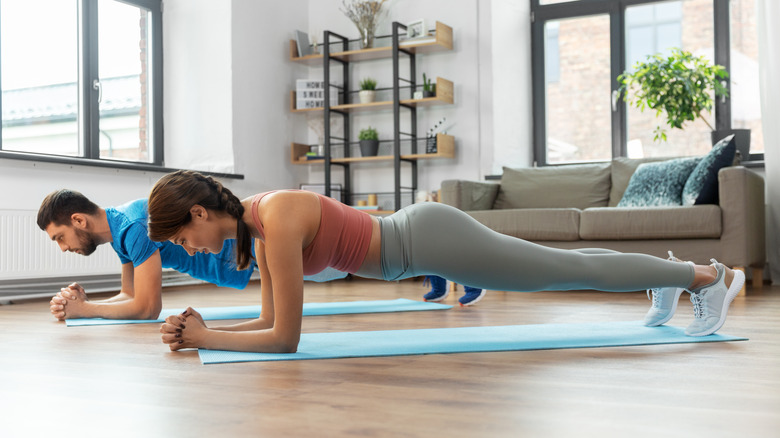What Your Trainer Might Be Getting Wrong About Planks
Planks are one of the most basic exercises you can do to strengthen your core. They don't take any weights or quick movements, which makes them doable for people in any phase of their fitness journey. However, you may want to check that your trainer is having you perform this move correctly. Here's what you should know.
If you've ever worked with a trainer, they may have told you that your back should be completely straight when you perform a plank. However, this does not engage the core muscles as much as possible, according to Livestrong. In addition to your core, your shoulder blades and glutes should also be engaged to get the most from this exercise. When all of these muscles are being used, your body may hunch a little bit in the back. This actually means you are getting more out of the movement than you would be if your back was kept completely flat.
"To correct this posture, I tell my clients to push into the ground and feel the shoulder blades engage against the ribcage," certified strength and conditioning coach Melissa Garcia, DPT, CSCS, told Livestrong. "Pull the belly button toward the ceiling while keeping the hips level."
You don't want to arch your back too much when doing a plank
While a straight back isn't ideal, you still need to make sure you have good posture when performing a plank. Many people lose out on its effects by holding their hips in the wrong position (via Today). Hips that are too high or too low will not correctly engage your core. Ideally, your hips should be in line with your shoulders. Your hands should also be shoulder-width apart to evenly distribute your weight.
A plank should be held for anywhere between 10 and 30 seconds to get the most benefits (via Harvard Health Publishing). Your form may begin to decline after that amount, which will negate most of the effects. "Focus on doing multiple sets of smaller amounts of time," said Eric L'Italien, a physical therapist with Harvard-affiliated Spaulding Rehabilitation Center. You can hold your plank for longer than 30 seconds if you want, but there's no need to hold each plank until you collapse. "Two minutes is often considered the maximum, and you don't get much more benefit after that," L'Italien said.


